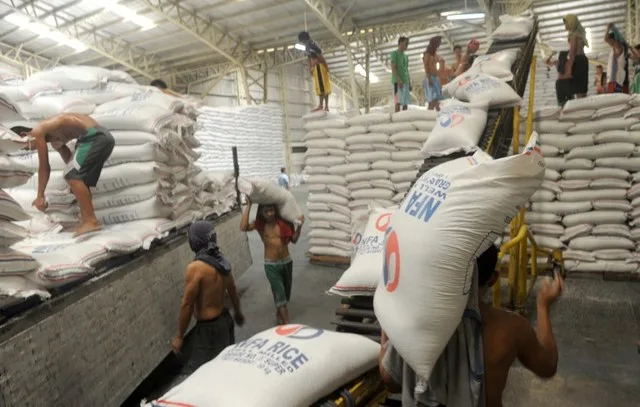MANILA – To ensure a steady supply of rice and mitigate potential shortages, the Philippines is set to receive approximately 76,000 metric tons of imported rice from Taiwan and India throughout this month and early January, according to a Department of Agriculture (DA) statement.
DA Undersecretary and officer-in-charge for operations, Roger Navarro, disclosed that nearly half a million metric tons of rice, imported by the private sector, are expected to arrive between December and early February. This aligns with the agreement between Agriculture Secretary Francisco Tiu Laurel Jr. and holders of rice import permits.

Navarro mentioned, “We received reports that around 100,000 tons of imported rice have already arrived in the country. This is part of the 495,000 metric tons committed by import permit holders to Secretary Tiu Laurel.” Taiwan donated the first batch of 20,000 bags, equivalent to 1,000 metric tons of rice, which was delivered before Christmas.
Additionally, 75,000 metric tons of rice are anticipated from India, arriving within the last week of December and early January. India, which had initially banned the export of non-basmati white rice in July to stabilize domestic supply and prices, later approved the export of over 1 million metric tons to seven countries in October. The Philippines is set to receive more than 28 percent of this export allocation.
Navarro clarified, “The 75,000 metric tons due in the coming weeks is part of the 295,000 metric tons of rice India has allocated to the Philippines.” With the combined volume of imported rice and the recent harvest by local farmers, Navarro assured that the country would have sufficient rice supply until the next harvest season beginning in March.
The private sector’s initiative to import grains is part of a broader strategy to increase the national rice staple inventory, anticipating potential challenges posed by the El Nino weather phenomenon. National rice consumption is estimated to be around 36,000 metric tons daily or approximately 1.08 million tons monthly.
Considering rice’s crucial role in the Philippines, economic managers, particularly the Bangko Sentral ng Pilipinas (BSP), are closely monitoring the rice supply situation due to its potential impact on inflation. Navarro highlighted that the BSP has taken proactive measures, aggressively raising interest rates since last year to curb inflation. Inflation can potentially affect consumers’ purchasing power and undermine overall economic growth.
In conclusion, the timely arrival of the imported rice from Taiwan and India is a significant step towards ensuring the Philippines’ food security and stability. As the nation braces for potential challenges, the collaborative efforts between the government, private sector, and international partners play a crucial role in safeguarding the country’s rice supply until the next harvest season.
See Also:
- Department of Agriculture Enhances Irrigation System to Mitigate El Niño Impact
- Why the Philippines Imports Rice: A Complex Mix of Geography, Demand, and Policy
- DA Forms 39 Farm Clusters in Eastern Visayas to Boost Agricultural Production
- Antique Province Urged to Regulate Outbound Shipment of Pork Amid Soaring Prices
- The Secrets to Growing Delicious Tomatoes
